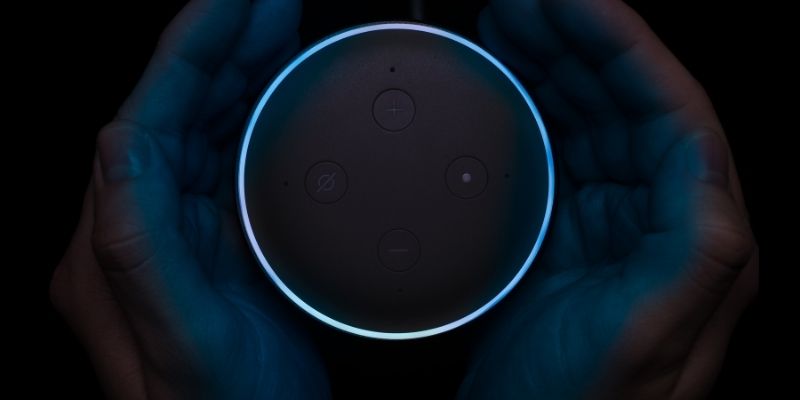The idea of virtual assistant goes as far back as 1994 with IBM’s Simon, but in the form we know them today, it’s all Apple’s doing. The age of virtual assistants started with Siri on the iPhone, first seen in 2011. From there, others began to pop up, such as Google Assistant, Samsung’s Bixby, and, of course, Amazon’s Alexa.
Ultimately, virtual assistants, as real as they might seem at times, are just technology and software. As a result, they don’t always work as smoothly as you might want them to most times. For instance, you might notice Siri or Alexa having trouble understanding what you say or what you want it to do. This can be pretty annoying, to be honest.
Fortunately, there are always ways to get around software hitches like this. As long as there isn’t an actual fault with the hardware, a few tweaks are likely all you need to get your virtual assistant hearing you loud and clear.
In the US, nearly seven out of every ten people with a smart speaker use one built by Amazon, which means it has Alexa. This isn’t even accounting for other companies like Sonos, which can use Alexa as well. For that reason, we’ll be focusing on Alexa in particular for today’s article.
Now then, if you’ve noticed that Alexa doesn’t understand what you say most of the time, this should help you fix that problem!
Do you have a particular question about what to do when Alexa having trouble understanding you? Then use the table of contents below to jump to the most relevant section. And you can always go back by clicking on the black arrow in the right bottom corner of the page. Also, please note that some of the links in this article may be affiliate links. For more details, check the Disclosure section at the bottom of the page.
Why Does Alexa Have Trouble Understanding?
Knowing why Alexa says she is “having trouble understanding right now” will better help you understand how to fix the problem.
If this doesn’t happen to you much, then it could be due to Amazon’s servers going down. If this is the case, you can’t do anything but wait. Typically, huge outages like that shouldn’t take more than an hour or two to be rectified. But apart from that, why is Alexa having trouble understanding?
If that’s not the culprit for Alexa not understanding, then it might be one of these:
- Alexa has lost connection to the internet, so she cannot access the servers to carry out your command.
- It may be a bug, and a system update is needed.
- You are not speaking clearly enough, or the microphone is blocked off somehow.
- It might just be one of those issues that needs a simple reset.

What to Do to Make Alexa Understand?
If this is the problem that you’re dealing with, you’re here to know exactly how you can fix it, first and foremost. Luckily, many of the issues that can cause this are within your control, so you can get it fixed up in a snap if you need to.
If Alexa doesn’t understand the things you are saying, you can try out any of these potential fixes to get her back up and running:
- Ensure that your internet connection is active. If Alexa is connected to the same Wi-Fi as a computer or a phone, you can simply try and browse the web on one of those. If it works, it’s not an issue from your ISP.
- Check that Alexa is connected to the Wi-Fi. Go into the Alexa app and go to Settings. Then go to Device Settings and choose whichever device is having the issues. If it says “Device offline,” then Alexa isn’t connected to the internet. Try moving it closer to the router of reconnecting to the Wi-Fi network.
- Unplug the smart speaker and plug it back in. This is simple, but you’d be surprised how many problems it can fix.
- Install any system updates. Sometimes system-wide bugs can cause issues like this, and when they are discovered, they are fixed in the next update. You can do this easily by asking, “Alexa, check for software updates.” Though these should be installed automatically in most cases.
- Ensure that Alexa isn’t muted! This seems pretty basic, but look out for the red LED. If it’s there, she is likely muted and can’t hear you no matter what.
- Keep the smart speaker away from any walls, plants, or large objects that might interfere with sound reaching the microphone. You can also try your best to eliminate any background noise. However, noise cancelation with most of these speakers tends to be really good. As a last-ditch effort, look into the mic port if there’s anything that might be impeding it. You might need to give it a little clean.
- Try your best to enunciate your words properly. Alexa is an AI, and there is a lot of , so as good as it can understand you at times, it won’t understand you as well as a human. This is why you need to try your best to speak as naturally and as clear as possible.
Credits: Thanks for the photo to Canva.

At ipoki.com we only mention the products that we’ve researched and considered worthy. But it’s important to mention that we are a participant of several affiliate programs, including Amazon Services LLC Associates Program, an affiliate advertising program designed to provide a mean for us to earn fees by linking to Amazon.com and affiliated sites. As an Amazon Associate ipoki.com earns from qualifying purchases.


